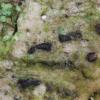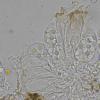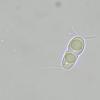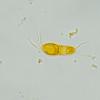
27-01-2013 18:58
 Chris Yeates
Chris Yeates
Bonsoir tousfound on an attached Quercus twig, gro

27-01-2013 19:26
 Rodríguez Borja
Rodríguez Borja
HelloToday´s morning I have found this Cosmospo

26-01-2013 15:43
Bonjour à tous,Voici un indéterminé restant de

20-01-2013 19:18
 Gilles Corriol
Gilles Corriol
Bonjour à tous,Mon Urceolella semble être dans u

26-01-2013 08:05
Nina FilippovaI gues that "mollisia knowledge" is a matter of

24-01-2013 10:12
Reza ShaianDear friends, I collected a Helvella specimen that

25-01-2013 08:44
Stefan BlaserHello everybody Can someone give me some advice o

24-01-2013 23:41
Hello!Pezizales this was collected in cow feces, s
Spores with setulae
Stefan Blaser,
17-07-2020 14:01
Dear all,
I hope someone can help me with this collection:
Substrate: Corticated hardwood twig, possibly Lonicera
Description:
Apothecia 0.2-0.5 mm in diameter, of variable shape but often oblong to slit-like, disc light brownish-translucent with a black cover that tears open to expose the disc.
Asci 31-40(50) x 14-16 µm, saccate, IKI negative. Ascospores 12-15 x 5-6 µm, 1-septate, hyaline, one cell slightly wider than the other, mostly weakly constricted at the septum, both cells with a large oildrop. At both spore ends there are two setulae of about 5-9 µm in length. Paraphyses not observed.
Asci 31-40(50) x 14-16 µm, saccate, IKI negative. Ascospores 12-15 x 5-6 µm, 1-septate, hyaline, one cell slightly wider than the other, mostly weakly constricted at the septum, both cells with a large oildrop. At both spore ends there are two setulae of about 5-9 µm in length. Paraphyses not observed.
Many thanks for any ideas,
Stefan
Hans-Otto Baral,
17-07-2020 16:55

Re : Spores with setulae
Yeah, this is Melaspileella proximella (= Banhegyia uralensis), currently placed in Asterinales.
Stefan Blaser,
17-07-2020 20:30
Re : Spores with setulae
Vielen Dank Zotto!
Ist diese Art nun lichenisiert oder nicht? (In der Schweiz im Flechtenverbreitungsatlas zu finden)
Lieber Gruss,
Stefan
Hans-Otto Baral,
17-07-2020 22:27

Re : Spores with setulae
Ich glaube nicht. Banhegyia galt als nichtlichenisiert, bei Melaspileella könnte lichenicoles Wachstum beobachtet worden sein.



